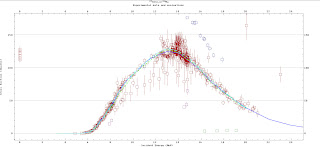the piping of the process flow together with the installed equipment and instrumentation.
Contents and Function
A piping and instrumentation diagram/drawing (P&ID) is defined by the Institute of Instrumentation and Control as follows:
A diagram which shows the interconnection of process equipment and the instrumentation used to control the process. In the process
industry, a standard set of symbols is used to prepare drawings of processes. The instrument symbols used in
these drawings are generally based on International Society of Automation (ISA) Standard S5. 1.
The primary schematic drawing used for laying out a process control installation.
P&IDs play a significant role in the maintenance and modification of the process that it describes. It is critical to demonstrate the physical sequence of
equipment and systems, as well as how these systems connect. During the design stage, the diagram also provides the basis for the development of system control
schemes, allowing for further safety and operational investigations, such as the hazard and operability study (HAZOP).
For processing facilities, it is a pictorial representation of
Key piping and instrument details
Control and shutdown schemes
Safety and regulatory requirements
Basic start up and operational information
List of P&ID items
Instrumentation and designations
Mechanical equipment with names and numbers
All valves and their identifications
Process piping, sizes and identification
Miscellanea - vents, drains, special fittings, sampling lines, reducers, increasers and swagers
Permanent start-up and flush lines
Flow directions
Interconnections references
Control inputs and outputs, interlocks
Interfaces for class changes
Computer control system input
Identification of components and subsystems delivered by others
Also Some kind of this map available for download:
Diesel of generator starting air system train 'B' Detail
Some kind of PS Map also available for download:
Notic : For open these maps you must have last version of flash player [download].
more info about second of maps in next post.


hi
ReplyDelete